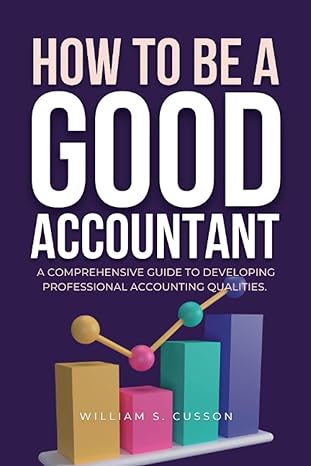Do you concur that the profitability options set forth on these pages of the case were best available to Coastal given their growth and market conditions at that point in time?
Development of Costal Limited Cook and Thomas approached the B.C. Ministry of Small Business, Technology and Economic Development and the Federal Business Development Bank for financial support for Costal. They were turned down because their proposal was determined to be infcasible. The banks also would not provide any financing because Cook and Thomas had no personal assets for use as collateral. flowever, they were able to get financial support from Mark Curric and Evan Clarry, owners of Curric Road Construction Limited. The deal was structured so that Curric Road Construction owned si per cent of Costal and Cook and Thomas 49 per cent. After payment of a $200,000 loan to Currie and Clarry, the cquity position would become 50 per cent Curric, 25 per cent Cook and 25 per cent Thomas. It took one and one-half years to repay the original $200,000 loan. In 1997, Costal entered into a joint venture with an investor (Jake Garner) to purchasc a profitable road construction company, A.A. McLeod Construction Limited (McLeod), in the Queen Charlottc area in British Columbia. Garner was responsible for the day-to-day operations and management of the firm. From 1997 to 2000, Cook and Thomas concentratcd primarily on cxpanding Costal operations by opening up tcrminals in Calgary and Edmonton. McL.cod continued to be profitable under Garner's direction. Costal's success to this point was attributed mainly to the dedication of Cook and Thomas. It was not unusual for either partner to work seven days a week, fifteen hours a day. During this period, Cook's responsibilities included answering the phonc, pouring 425F asphaltic product into 25 kilogram containers in the shop and taking care of financial matters as well as "pounding the pavement to drum up business. This hard work paid off for Cook and Thomas - Costal was profitable from its inception. Over this period, their management skills and business know-how increased enormously. In 2000, Cook and Thomas wanted to further vertically integrate forward. They attempted to purchase a profitable road construction company in Victoria (similar in size to Mcl.codbut the deal fell through. At the same time, Currie Road Construction was offered for sale. Curric and Clarry had received a serious offer from a British-based company to purchase Curric; however, they desired to sell it to Canadian investors if they could be found. Cook and Thomas saw this as an excellent opportunity to become fully integrated in the road construction industry in B.C. Because Currie was a major customer for Costal product, a change of ownership could jeopardize this account. Also, the purchase of Currie by another firm could have a negative effect on Costal's operations since Curric owned 50 per cent of Costal. Up to this time, Curric and Clarry were silent partners in Costal; they never interfered with the management of Costal and McLeod and the valuable long-term assets on Curric's balance sheet. Development of Costal Limited Cook and Thomas approached the B.C. Ministry of Small Business, Technology and Economic Development and the Federal Business Development Bank for financial support for Costal. They were turned down because their proposal was determined to be infcasible. The banks also would not provide any financing because Cook and Thomas had no personal assets for use as collateral. flowever, they were able to get financial support from Mark Curric and Evan Clarry, owners of Curric Road Construction Limited. The deal was structured so that Curric Road Construction owned si per cent of Costal and Cook and Thomas 49 per cent. After payment of a $200,000 loan to Currie and Clarry, the cquity position would become 50 per cent Curric, 25 per cent Cook and 25 per cent Thomas. It took one and one-half years to repay the original $200,000 loan. In 1997, Costal entered into a joint venture with an investor (Jake Garner) to purchasc a profitable road construction company, A.A. McLeod Construction Limited (McLeod), in the Queen Charlottc area in British Columbia. Garner was responsible for the day-to-day operations and management of the firm. From 1997 to 2000, Cook and Thomas concentratcd primarily on cxpanding Costal operations by opening up tcrminals in Calgary and Edmonton. McL.cod continued to be profitable under Garner's direction. Costal's success to this point was attributed mainly to the dedication of Cook and Thomas. It was not unusual for either partner to work seven days a week, fifteen hours a day. During this period, Cook's responsibilities included answering the phonc, pouring 425F asphaltic product into 25 kilogram containers in the shop and taking care of financial matters as well as "pounding the pavement to drum up business. This hard work paid off for Cook and Thomas - Costal was profitable from its inception. Over this period, their management skills and business know-how increased enormously. In 2000, Cook and Thomas wanted to further vertically integrate forward. They attempted to purchase a profitable road construction company in Victoria (similar in size to Mcl.codbut the deal fell through. At the same time, Currie Road Construction was offered for sale. Curric and Clarry had received a serious offer from a British-based company to purchase Curric; however, they desired to sell it to Canadian investors if they could be found. Cook and Thomas saw this as an excellent opportunity to become fully integrated in the road construction industry in B.C. Because Currie was a major customer for Costal product, a change of ownership could jeopardize this account. Also, the purchase of Currie by another firm could have a negative effect on Costal's operations since Curric owned 50 per cent of Costal. Up to this time, Curric and Clarry were silent partners in Costal; they never interfered with the management of Costal and McLeod and the valuable long-term assets on Curric's balance sheet







